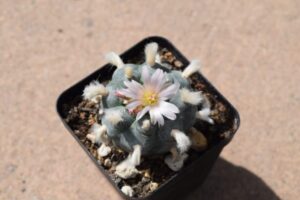The appeal of cacti extends far beyond their aesthetic beauty; these remarkable plants embody resilience, thriving in the harshest environments. Cacti are not merely decorative elements in gardens and homes; they symbolize survival in arid landscapes. The following exploration reveals where you can encounter these magnificent plants, emphasizing their striking forms and the landscapes they grace.
As you delve into the world of cacti, consider the rich diversity of environments they inhabit. Ranging from deserts to mountainous terrains, the locations you can find cacti offer unique experiences and breathtaking visuals.
Desert Ecosystems: Nature’s Arid Wonderland
Deserts are undoubtedly the prime habitat for cacti. From the iconic Saguaro cactus of the Sonoran Desert to the smaller, yet equally intriguing, species found in the Chihuahuan Desert, these landscapes provide a veritable feast for nature lovers and photographers alike.
The Sonoran Desert, spanning parts of the southwestern United States and northwestern Mexico, hosts the majestic Saguaro cactus (Carnegiea gigantea). Standing tall, some Saguaros can reach heights of up to 40 feet and live for over a century. Visiting the Saguaro National Park in Tucson offers an unforgettable visual experience. The towering cacti, juxtaposed against a backdrop of dramatic sunsets, create picturesque scenes that attract artists and nature enthusiasts.
In the Chihuahuan Desert, which stretches across parts of Texas and Mexico, one can encounter the striking organ pipe cactus (Stenocereus thurberi). This unique species forms tall, narrow columns that resemble organ pipes. The reblooming phenomenon after seasonal rains brings these surreal structures to life, creating a stunning display of biodiversity.
The Atacama Desert in Chile is another prime location for cactus enthusiasts. Recognized as one of the driest places on earth, the Atacama’s stark beauty is punctuated by the hardy Copiapoa species. Their distinct forms and colors create a striking contrast against the muted tones of the landscape, inviting admiration of their adaptation capabilities.
Mountainous Regions: The Cactus Thriving at Altitude
While often associated with desert terrains, cacti are also found in elevated areas where the climate is cooler and where sunlight filters through varied foliage. One such example is the majestic Andean region, particularly in Bolivia and Peru, where cacti adapt to high altitudes, showcasing their incredible versatility.
The high-altitude cacti, such as the famous Echinopsis lageniformis, thrive in rocky outcrops amidst the breathtaking views of the Andes. Known for their stunning flowers that emerge from cylindrical bodies, these cacti stand as a testament to nature’s artistry. Trekking through the mountains allows you to witness these unique variants in their natural habitat, revealing the interplay of life in challenging environments.
Additionally, the Sierra Nevada in California offers an intriguing glimpse of cacti in a mountainous setting. The California Barrel Cactus (Ferocactus cylindraceus) can be spotted dotting the rocky landscapes, adding pops of color among the earthy browns and greens. These rugged terrains provide an idyllic backdrop, especially during spring when the blooming season brings forth vibrant blossoms that mesmerize visitors.
Urban Environments: Cacti in Cityscapes
Interestingly, the relationship between cacti and urban landscapes has flourished in recent years. Cities known for their sun-kissed climates, such as Phoenix and Los Angeles, have increasingly embraced cactus gardens, finding spaces for these plants amid the concrete and glass.
The Desert Botanical Garden in Phoenix is a prime venue for exploring diverse cactus species. Visitors can stroll through meticulously curated landscapes showcasing everything from towering Saguaros to delicate flowering cacti. This urban oasis not only promotes conservation efforts but serves as a vibrant community hub for education about arid-land ecosystems.
In Los Angeles, the Getty Center features cactus gardens that blend art and nature seamlessly. Guests can marvel at modern architecture surrounded by native cactus species, creating a harmonious blend that encourages appreciation for both the natural world and human creativity.
Cactus installations in public parks and city blocks have become increasingly prevalent across many urban areas. These greenery initiatives serve an ecological purpose by helping to combat urban heat and providing habitats for local wildlife. Observing the resilience of cacti thriving in concrete jungles adds an unexpected twist to the typical understanding of where these plants can grow.
Conclusion: Embrace the Journey of Discovery
Finding cacti enhances the experience of exploring various ecosystems, revealing the beauty and adaptability of these remarkable plants. Whether you’re traversing the arid deserts, ascending scenic mountains, or wandering through thriving cities, the enchanting presence of cacti captivates the spirit. From the sunlight-kissed deserts of the American Southwest to urban botanical gardens, the adventure of seeking out these fascinating plants invites the traveler to appreciate both the unique ecology and the artistic brilliance of nature.
The intrigue surrounding cacti is akin to their tenacity in the face of adversity. Each locale offers distinct narratives of survival and adaptation, reflecting the broader themes of resilience and beauty. This is where the journey of the cactus turns into a journey of discovery, leaving explorers enriched by both knowledge and exquisite visuals.




Leave a Comment